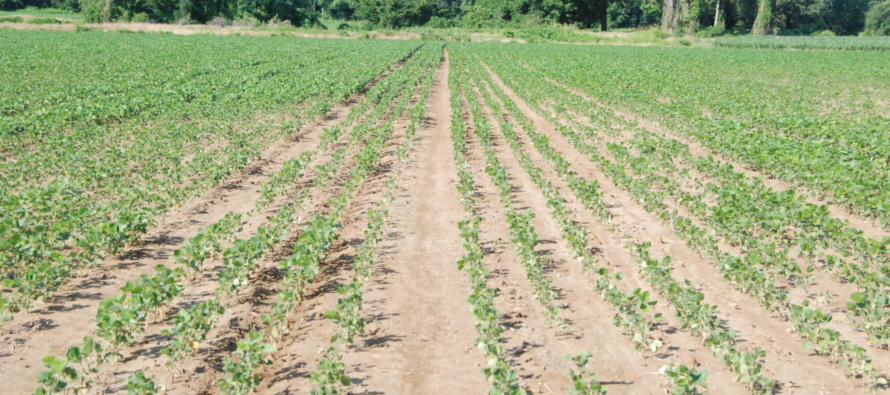Free Mississippi Soybean Nematode Testing Through August 2020

Related Articles
- 2010 Soybean And Corn Variety Trial Data 3
- Evaluation of Peanut Prescription Rx Program in Mississippi 0
- 2010 Row Crop Short Course Video Links 0
Latest Tweets
By: Tom Allen and Clarissa Balbalian
The Plant Diagnostic Lab is offering free nematode testing for Mississippi soybean fields through August 30, 2020. The free testing, offered as a portion of a check-off funded project by the United Soybean Board, has been expanded to include all plant parasitic nematodes of soybean, not just soybean cyst nematode (SCN). To qualify, samples must be accompanied by the SCN sample submission form (see below link), which is included in this blog. Information regarding scouting and soil testing for the soybean cyst nematode are included in this blog post:
Where to sample
Sample fields of continuous soybean or field situations that may have been in cotton followed by soybean. Choose areas of fields that may be historically poor performers as evidenced by yield maps, or appearance of the soybean crop throughout the season. Areas of fields that look like they do not water well, where plants may struggle, or where plants are shorter than the rest of the field may be indicative of a nematode problem.
Best time to sample
Sampling for nematodes can be done at any time of the year. However, one of the best times is to collect samples immediately after harvest. Nematode populations build throughout the season and are typically greatest at the end of the season. Sampling at the end of the season can also aid in the decision-making process for the subsequent season.
Since the general climate has switched to hot and dry recently, if you can’t get the probe in the ground, waiting for a good soaking rain would be the best alternative.
Sampling procedure
Choose fields for sampling based on the presence of light soil, nematodes do not like soils that contain a high clay content Collect soil samples to a depth of no less than 6 inches. Soil samples should be collected from within the rooting zone to increase the likelihood of extracting the problematic nematode from field soil. See the attached information as to the proper sampling procedure.
Sample storage
Store collected samples out of direct sunlight. In addition, store samples in a cool place, either in a cooler with some ice or a refrigerator before nematodes can be delivered/shipped to the laboratory. If shipping, make sure you ship overnight and keep cool in transit in a Styrofoam cooler with cool packs, do not use ice for shipping.
Do NOT freeze soil samples, keeping them cool in a cooler that contains some ice or in a refrigerator





Let me tell You a sad story ! There are no comments yet, but You can be first one to comment this article.
Write a comment